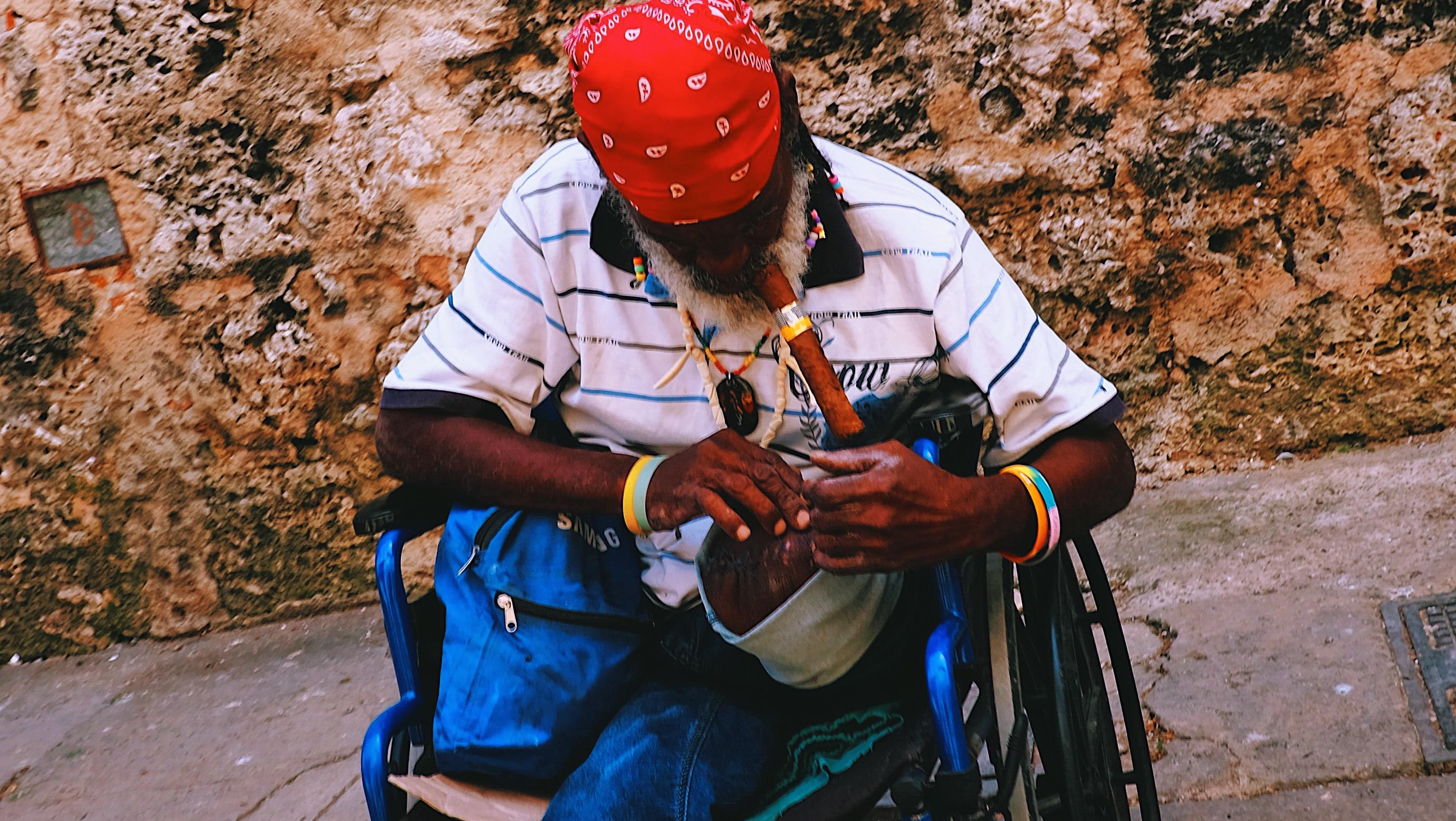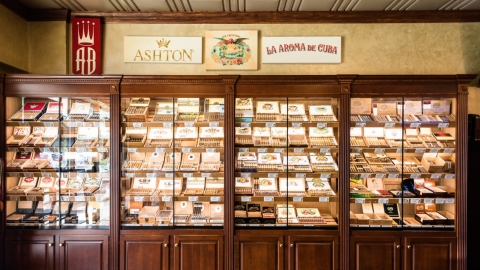Home of cigars
During my time in Cuba, I could easily see Cubans, both men and women, smoking cigars regardless of class, whether they were sitting in a classic 1950s Chevrolet in formal attire or a man in sloppy clothes. Perhaps the only difference was whether the cigars were rolled by hand or by machine, with high-quality ingredients or just low-quality tobacco leaves.

When you come to Cuba, in every corner tourists set foot in, there are cigar brokers inviting you to buy cigars. They often start with questions: “Where are you from? Do you want to buy cigars?”… If you just show a little intention to buy, they will lead you to a small house and say that they sell boxes of cigars here at a much cheaper price than the market price. Of course, no one guarantees the quality of cigars in places like this.

So why is Cuba called the home of cigars?
Around 1492, when the expedition led by Christopher Columbus landed and explored this land, they found tobacco plants and began picking leaves, rolling them in corn and palm leaves to smoke. They called it “cohiba”. Columbus brought “cohiba” back to Spain - a country famous in the world at that time for tobacco trade - to promote. Just a few decades later, cigar smoking became so popular throughout Spain and neighboring European countries that the Spanish decided to establish cigar farms and factories on Cuban territory in 1676.
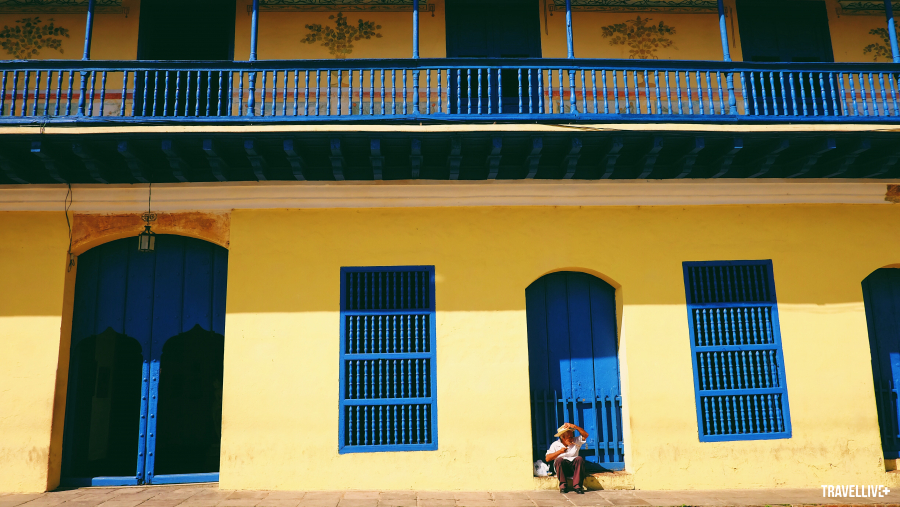
By the 18th century, cigar makers were allowed to register their brands and King Fernando II of Spain agreed to open Cuba to free trade. Tobacco cultivation was concentrated in the surrounding areas of Pinar Del Rio, especially the Vinales Valley. Under government supervision, cigar quality gradually improved, but it was not until the early 1990s that the Cuban cigar reached its golden age.
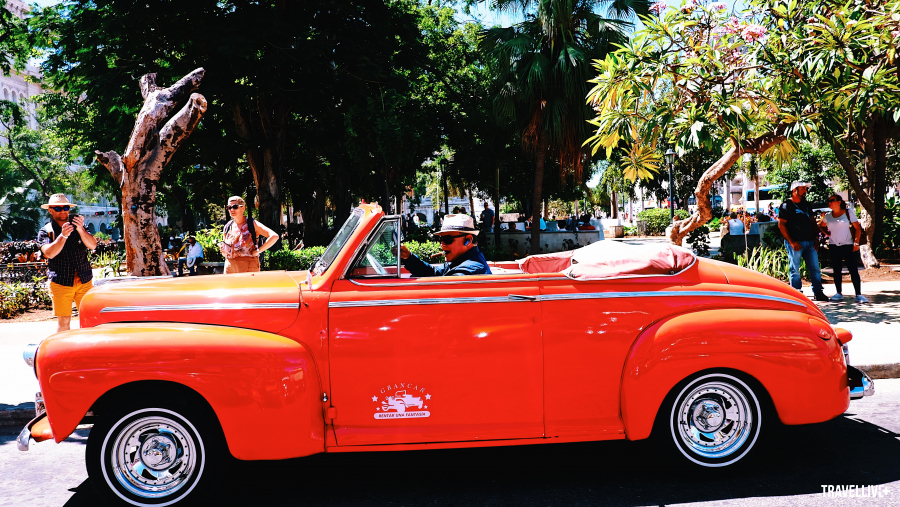
Not long after, in 1991, Cuba fell into an economic crisis when the Soviet Union collapsed, the Soviet Union's financial support was cut dramatically, causing the quality of Cuban cigars to decline significantly. It was not until 2002 that tobacco growers were able to recover from this situation and bring the quality of tobacco and Cuban cigars back to the way they were before.
Today, when you come to Cuba, you can visit tobacco farms and cigar factories to see how they make the famous cigars. And there is no better place than the Vinales Valley to explore and buy cigars “right from the factory” at very good prices.
The process of making a cigar
After nearly 3 hours in a shared taxi, I arrived at the Vinales Valley, located about 190 km from the capital La Habana and which supplies most of Cuba's cigars. In this town, the people are given land by the state to grow tobacco and make cigars. All the steps are manual, from planting the plants, picking the leaves, drying them, seasoning them, and rolling them into cigars. Each harvest, the state will collect 90% of the output to sell to companies, while people can only keep 10% to sell or use themselves.

Horseback riding was a fun way to get to one of the biggest tobacco farms in the Vinales Valley. I drove along red dirt roads, looking at the green tobacco fields and the palm-thatched houses in the middle of them. I asked the horse rider who was with me and found out that this was where they dried the tobacco leaves.
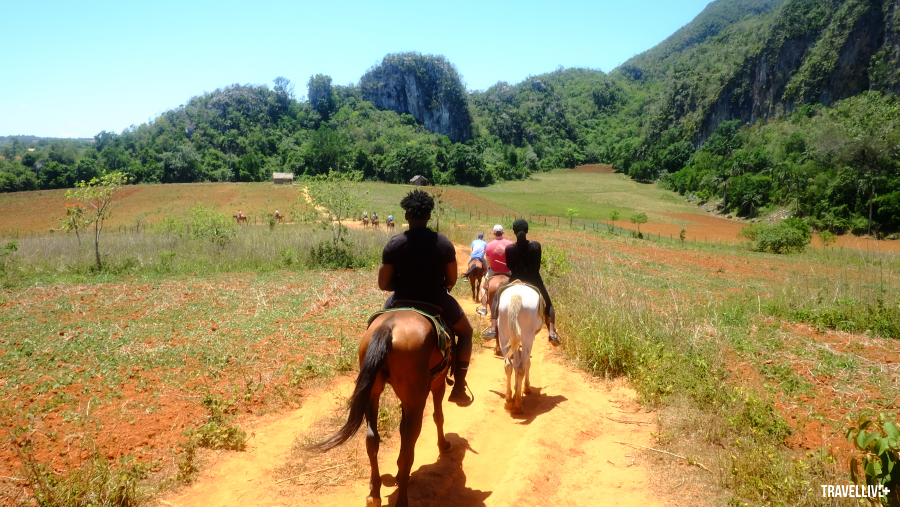
The time to harvest these tobacco plants is about three months after planting. After harvesting, they will bring them to the drying house to hang them on pre-arranged scaffolding and wait until the tobacco leaves begin to dry, gradually turning a beautiful brown color. These drying houses are always checked regularly for temperature and humidity to ensure the best fermentation of the tobacco leaves. The flavor and color of the tobacco leaves after drying depends a lot on the temperature of the drying house, the tobacco leaves will have a stronger color and flavor when dried at a higher temperature. It is not possible to spray pesticides during the entire tobacco growing process, so if there are worms or any other insects appearing in the leaves being dried, people will have to catch them by hand. This will help the tobacco leaves retain their original aromatic flavor.

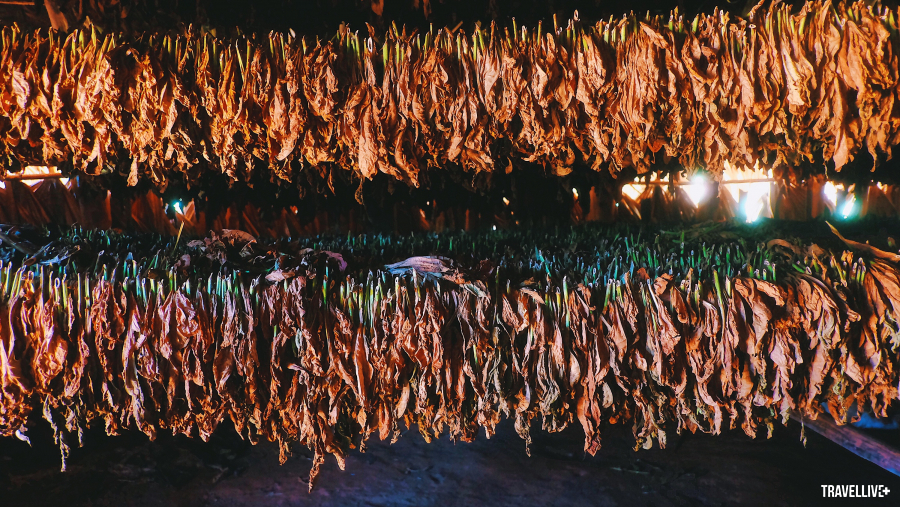
After about three months of drying and fermenting, farmers begin to select the best leaves to roll into cigars. They collect and classify the leaves based on thickness, color, roughness, size, etc. This is extremely important because it greatly affects the quality of the cigar, so it can take them a whole year to complete.
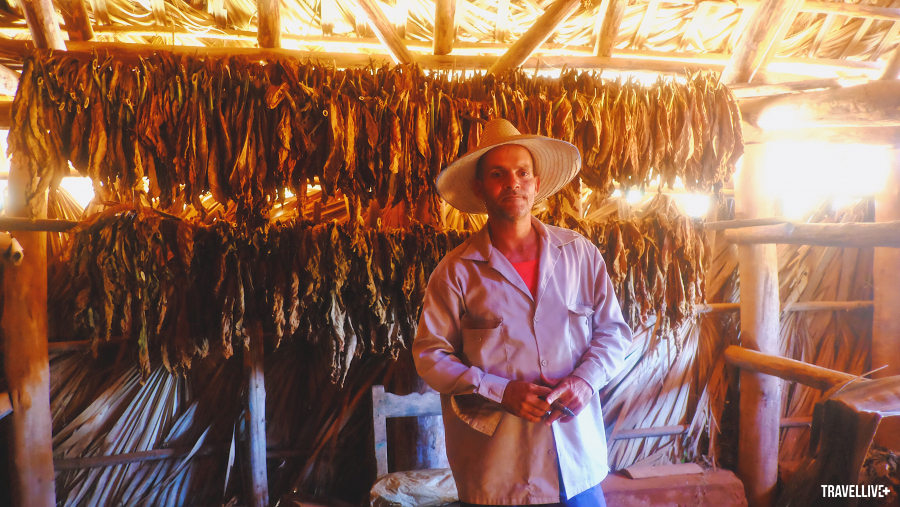
The cigar rolling process can be done by machine or by hand. The biggest difference is that when rolling by machine, the surface of the cigar will be drier and often burns unevenly because of the mixed leaves and other debris. This makes machine-rolled cigars less valuable. Hand-rolling requires the roller to have many years of experience and be extremely meticulous in removing even the smallest leaves. A sturdy and beautiful cigar usually takes the roller about two minutes of time. This is the reason why hand-rolled cigars are always very expensive and the taste is also superior. Each cigar brand has its own secret and cigar rolling formula to create a unique highlight.

When visiting the tobacco farm in Vinales, the cigar rollers only show visitors the step of "transforming" from loose leaves into a beautifully rolled cigar. In fact, they also have to add the step of beautifying, cutting off excess parts and checking the quality before handing over the product. Cuba is famous for its strict regulations on the quality of cigars, so this inspection step is carried out very carefully from the shape of the cigar, the tightness of the leaf rolling to the weight corresponding to certain standards that have been set. Cigars that do not meet the requirements will not be allowed to reach the market.
After demonstrating the cigar rolling technique, the cigar roller invited me to try the cigar he had just finished. I don’t smoke cigarettes, but since I was here, there was no reason not to try. I took a few puffs, looking quite skillful. The cigar smoke didn’t bother me like cigarette smoke, the taste was fragrant and pleasant, not causing a sore throat or choking like I had when I tried smoking cigarettes before.
Why are Cuban cigars always the most expensive?
If you walk into a cigar shop and ask to buy one, you will notice that Cuban cigars are always more expensive than cigars from other countries in the same segment. I think there are two main reasons for this difference.
One, the more famous the brand, the higher the price you will have to pay to own their products. And the same goes for Cuban cigars, the Cuban cigar brand has been famous for its quality for centuries.
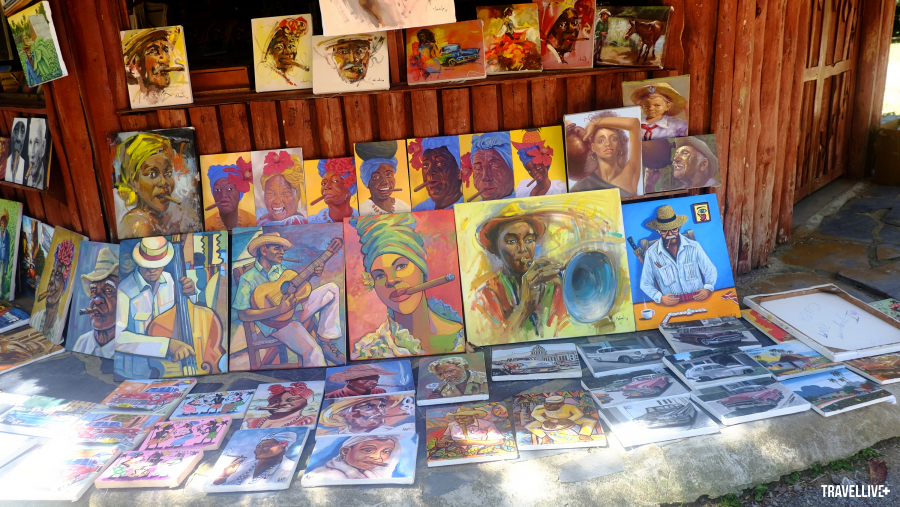
Second, the process of creating a Cuban cigar is very strict, multi-step and requires high skills from professional cigar artisans. To produce a high-quality finished cigar, it can take about one to three years from the time the tobacco seeds are planted in the ground, harvested, dried, fermented, screened, preserved, etc. until the finished product is rolled and quality checked. Every step is strictly controlled by cigar experts.
So, you can imagine the amount of manpower and time they have to spend to produce a high-quality Cuban cigar, right? So it is understandable to say “you get what you pay for” when it comes to Cuban cigars. But to ensure you buy high-quality cigars, you can go to large cigar showrooms in the city center or buy them at Havana airport before boarding the plane back home.
Famous Cuban cigar brands
In Cuba, the only company licensed by the government to sell cigars is Habanos SA. Currently in Cuba there are more than 27 types of cigars but the most famous are Cohiba, Montecristo, Romeo & Julieta.
Cohiba is considered the best cigar brand in the world. Not only is it available in most cigar shops, the image of this brand is also printed on souvenirs. Cohiba is the favorite cigar of President Fidel Castro and is always a gift for distinguished guests of Cuba.
Montecristo accounts for 50% of Cuba’s cigar production. With a wide range of flavors from medium to strong, Montecristo is suitable for all cigar lovers. Named after the novel by French writer Alexander Dumas, Montecristo is considered the most literary cigar in the “industry”.
Romeo & Julieta has a gentle and romantic taste like the famous love story of the great poet William Shakespeare. This brand is suitable for those who are new to cigars and love luxury.





